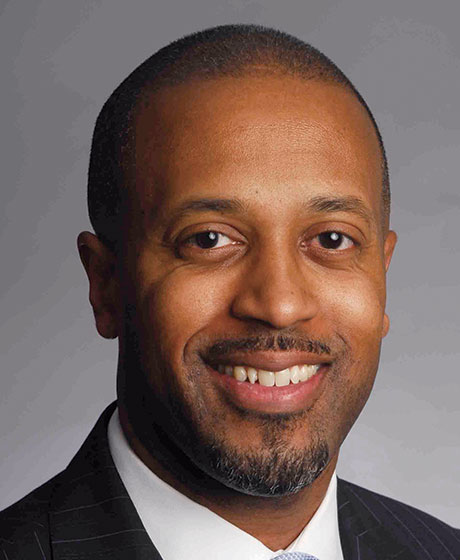
executive director’s note
by Vernon M. Billy
CSBA’s wildfire mitigation bill part of long rebuilding effort
n October 2 of last year, EdSource published the first entries in its series titled “California’s Homeless Students: Undercounted, Underfunded and Growing,” offering a bleak look at the effects of a lack of stable housing on more than 200,000 children in California — a number they report has grown 20 percent since 2014.
On October 8, six days after these reports about the expanding crisis of homelessness were published, the Tubbs Fire started at 9:45 p.m. Seven minutes later came the first sparks of the Atlas Fire. The Nuns Fire began eight minutes after that.
Twenty-two days later, by the time Cal Fire declared the Northern California fires fully contained, 5 percent of the entire housing supply in Santa Rosa, California, was gone. Another 569 homes in Napa, California, were reduced to ash.
“We had a housing problem three weeks ago; now we have a housing problem minus 3,000 more houses,” Santa Rosa Mayor Chris Coursey told the Los Angeles Times in October.
Less than two months later, and with the Golden State’s wounds still raw from watching the North Bay fires smolder, the Thomas Fire, now the largest fire California has ever known, would vanquish more than 1,000 structures in Ventura and Santa Barbara counties. More than 100 more homes would be lost in January in the Montecito mudslides, further compounding one of the most inconceivably tragic sequences of disasters in our state’s history.
To those of us watching these events from the relative safety of the Sacramento area and other parts of the state, the immediate feeling was one of almost nauseating helplessness. We watched entire families fleeing for their lives, grasping onto faint threads of hope that their homes would still be there when they returned.
“We had a housing problem three weeks ago; now we have a housing problem minus 3,000 more houses.”
– Santa Rosa Mayor Chris Coursey
In those moments, one has to believe that matters such as work and school were distant afterthoughts to all those affected — as they will remain for quite some time for those students and families throughout the state who now find themselves suddenly uprooted from the life they once knew.
As so many California public school students and their families work to rebuild, there are two important questions that education leaders must ask:
One, what can school districts and county offices of education do to ensure maximum preparedness for the next natural disaster? Unfortunately, it is not a question of if, but when another will come. Our feature story in this magazine provides local governance teams with first-hand guidance on this critical endeavor, based on lessons learned from some districts in recently affected communities.

If schools do not have the funding to maintain their staffing levels and their programmatic offerings, then the breadth and quality of the education they are able to provide their students inevitably suffers, and their ability to serve displaced students when they return will likewise suffer.
Two, how do we ensure that our schools are able to fulfill their role as a cornerstone of these communities’ rebuilding efforts by continuing to provide educational opportunities for their students?
To be clear, this is hardly the first time that schools in California have been faced with this disheartening task. I discussed this very point in the spring Executive Director’s Note two years ago, after a series of 2015 fires collectively gutted more than 1,800 residences in Northern California.
As Wendy Gattoni of the Lake County Office of Education said in a September 2017 article about Lake COE’s bustling Healthy Start program, “there are families out there who still do not have a home of their own,” more than two years after the Valley Fire struck the North Bay. The article also went on to say that, although Healthy Start predominantly serves at-risk youth, and many families who may not have been considered “at-risk” before the fire were immediately considered at-risk after it.
In the effort to help schools ravaged by recent disasters, CSBA is sponsoring Assembly Bill 2228, introduced in February. This bill, authored by Sonoma County Assemblymember Jim Wood (D-Healdsburg), will allow school districts within counties where a state of emergency was declared by Governor Jerry Brown to — over the next three fiscal years — claim a level of average daily attendance comparable to what that they would have been able to claim had the disasters not occurred.
It may seem somewhat trite to focus on something like ADA calculations in the face of such tragic events, but it is crucial that affected school districts are able to maintain their funding levels during times when their ADA — a core factor in determining school district funding — are suffering sizable downturns.
If schools do not have the funding to maintain their staffing levels and their programmatic offerings, then the breadth and quality of the education they are able to provide their students inevitably suffers, and their ability to serve displaced students when they return will likewise suffer.
In this era of ever-compounding accountability measures for public schools, LEAs statewide have very little latitude if their student performance drops — even if this recent string of disastrous events is the root cause.
As Santa Rosa City Schools board member and CSBA Past President Frank Pugh (who further discusses the North Bay fires and other topics later in this edition of California Schools) has said, “Our wealthy, our working class and low-income neighborhoods were all subject to the same unbiased destruction.”
We know that homelessness can dramatically impact a student’s academic success. Will AB 2228 fully solve this problem? No — nor can CSBA or anyone else solve the state’s housing crisis with any single piece of legislation. AB 2228 is one of the measures of support we can offer to ensure that schools impacted by these recent disasters are ready to support their students, and that they remain a bedrock of learning, strength and pride in their communities.
As the overwhelming response of support we saw within the communities affected by wildfires and mudslides showed, it truly does “take a village,” and we at CSBA are doing our part as members of the village.
